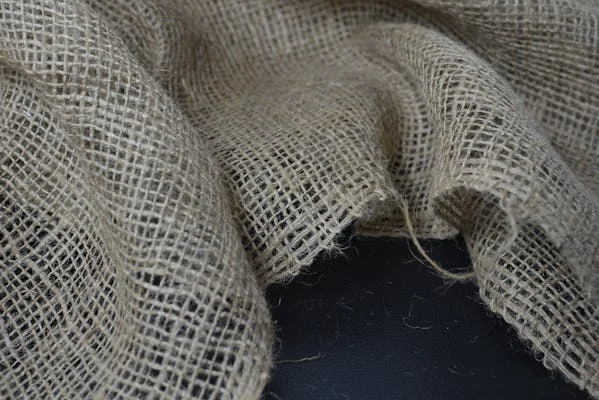When it comes to industrial-grade materials, 121 Fiber Cloth Textron stands out as one of the most highly regarded fabrics in the market. Its versatility, strength, and performance in demanding conditions make it a go-to option for a wide range of applications. This article will delve deep into the properties, uses, and benefits of 121 Fiber Cloth Textron, providing a comprehensive understanding of this outstanding material.
What is 121 Fiber Cloth Textron?
121 Fiber Cloth Textron is a premium, high-performance fabric designed and manufactured by Textron, a leader in industrial textiles. This cloth is renowned for its excellent strength-to-weight ratio and versatility, making it suitable for a variety of industries, including aerospace, automotive, and manufacturing.
Textron’s 121 Fiber Cloth is primarily composed of advanced synthetic fibers that are woven to create a durable, flexible, and resistant fabric. Its unique blend of materials ensures that it can withstand harsh conditions such as high temperatures, abrasion, and chemical exposure. As a result, 121 Fiber Cloth Textron is highly sought after for applications requiring both durability and flexibility.
Key Features of 121 Fiber Cloth Textron
Durability and Strength
One of the standout features of 121 Fiber Cloth Textron is its impressive durability. Whether exposed to extreme temperatures or challenging mechanical stresses, this fabric maintains its integrity. The fibers used in its construction are engineered to resist damage caused by abrasions, chemicals, and environmental elements, ensuring that the cloth lasts much longer than traditional fabrics.
High-Temperature Resistance
The 121 Fiber Cloth Textron is specifically designed to perform in environments with elevated temperatures. Many industrial applications require materials that can endure high heat, and Textron’s cloth meets this demand with its heat-resistant properties. It is commonly used in areas where other fabrics may degrade quickly due to temperature fluctuations.
Chemical Resistance
Industries that deal with hazardous chemicals, such as automotive manufacturing or chemical processing, often need materials that can resist corrosion and degradation from exposure to acids, oils, and solvents. 121 Fiber Cloth Textron excels in this area, offering superior chemical resistance, ensuring longevity and reliability even in chemically aggressive environments.
Lightweight Yet Strong
Another key characteristic of 121 Fiber Cloth Textron is its lightweight nature, which makes it easier to handle and manipulate during production processes. Despite its light weight, the material does not compromise on strength, offering both flexibility and resilience in even the most demanding settings.
Versatility in Applications
The versatility of 121 Fiber Cloth Textron makes it suitable for a wide range of applications. Whether used as insulation, protective coverings, or as part of composite materials, this cloth adapts to various needs across different industries. Its ability to be customized in terms of size, thickness, and form further expands its application potential.
Common Applications of 121 Fiber Cloth Textron
Aerospace and Aviation
In the aerospace industry, Fiber Cloth Textron is frequently used in applications such as insulation, fireproofing, and protective covering for sensitive equipment. Its heat resistance and lightweight properties make it ideal for parts that need to withstand extreme conditions while maintaining structural integrity.
Automotive Manufacturing
Automotive manufacturers also benefit from the strength and resilience of Fiber Cloth Textron. This cloth is used for a variety of purposes, including as a protective barrier against high temperatures in engine compartments, as well as for soundproofing and vibration damping in vehicle interiors.
Industrial Manufacturing and Construction
Textron’s 121 Fiber Cloth plays a significant role in industries such as construction and manufacturing. It is used for protective coatings, insulating cables, and shielding against heat in welding operations. Its durability and versatility make it an indispensable material in heavy-duty construction applications.
Textile Industry
In the textile industry, 121 Fiber Cloth Textron is often employed as a high-performance fabric for making specialized clothing, such as firefighter uniforms, industrial protective wear, and heat-resistant gloves. These garments require fabrics that can stand up to heat and stress, and Fiber Cloth Textron delivers on these demands.
Advantages of Using 121 Fiber Cloth Textron
Extended Product Lifespan
Thanks to its superior strength, durability, and resistance to wear and tear, 121 Fiber Cloth Textron has a longer product lifespan than many other types of fabrics. This makes it a more cost-effective choice for industries where material replacement is frequent and costly.
High-Performance in Harsh Environments
Whether exposed to intense heat, abrasion, or hazardous chemicals, Fiber Cloth Textron maintains its high performance. Its ability to withstand these extreme conditions makes it an ideal choice for environments that other fabrics simply cannot handle.
Customization Options
Textron provides various customization options for the 121 Fiber Cloth, allowing industries to tailor the fabric’s characteristics to their specific needs. This flexibility is invaluable in industries where specialized requirements are critical to operational success.
Easy to Work With
Despite its robust properties, 121 Fiber Cloth Textron is surprisingly easy to work with. It can be sewn, cut, and manipulated without losing its structural integrity, making it user-friendly for manufacturers and fabricators.
How 121 Fiber Cloth Textron is Manufactured
High-Tech Weaving Process
The production of Fiber Cloth Textron involves an advanced weaving process that combines synthetic fibers for maximum strength and flexibility. Textron utilizes state-of-the-art technology to weave the fibers into a dense, yet flexible fabric that meets the high standards required for industrial applications.
Quality Control
Textron’s commitment to quality ensures that every roll of Fiber Cloth Textron undergoes rigorous quality control testing. This testing includes assessments of tensile strength, heat resistance, and chemical durability to ensure that the fabric meets industry standards.
Integration with Composite Materials
In many applications, Fiber Cloth Textron is used as part of composite materials. By combining the cloth with resins and other materials, manufacturers can create lightweight, strong components for use in aerospace, automotive, and construction industries. This integration significantly enhances the material’s properties, making it even more valuable in high-performance applications.
Maintenance and Care for 121 Fiber Cloth Textron
Cleaning and Maintenance
Maintaining Fiber Cloth Textron is relatively straightforward. For most industrial applications, it can be cleaned with mild detergents and water. However, when dealing with heavily soiled fabric or fabrics exposed to harsh chemicals, specific cleaning agents may be required to preserve its integrity.
Storage
Proper storage is crucial for extending the lifespan of Fiber Cloth Textron. It should be stored in a dry, cool place away from direct sunlight and chemical exposure. Keeping the fabric in optimal conditions ensures that it retains its strength and performance over time.
Inspection
Regular inspection of Fiber Cloth Textron is essential to ensure it continues to meet the demands of the application. Check for signs of wear, such as fraying or discoloration, particularly in high-stress areas. If damage is detected, the cloth should be replaced to maintain optimal performance.
Conclusion
121 Fiber Cloth Textron is a remarkable material that excels in various industries due to its durability, heat resistance, and versatility. Its applications in aerospace, automotive, industrial manufacturing, and textiles showcase its exceptional value in demanding environments. The ability to withstand extreme conditions while remaining lightweight and strong makes it an indispensable material for those seeking long-lasting performance.
FAQS
1. What is a high-performance industrial fabric?
High-performance industrial fabrics are materials designed to withstand extreme conditions such as high temperatures, chemical exposure, and physical stress. These fabrics are often used in industries like aerospace, automotive, and manufacturing for their durability, strength, and versatility.
2. How are industrial fabrics tested for durability?
Industrial fabrics are tested through rigorous quality control processes that evaluate factors such as tensile strength, heat resistance, abrasion resistance, and chemical stability. These tests ensure the fabric can perform reliably in demanding environments.
3. Can these fabrics be customized for specific applications?
Yes, many high-performance fabrics can be tailored to meet the specific needs of different industries. This includes customizing properties like thickness, heat resistance, and chemical resistance to suit particular applications, such as insulation or protective clothing.
4. How do I maintain and clean industrial fabrics?
Maintaining industrial fabrics involves regular cleaning and inspection. Most fabrics can be cleaned with mild detergents and water, though heavy soiling may require specialized cleaning agents. Additionally, inspecting the fabric for signs of wear and tear can help extend its lifespan.
5. What industries use high-performance fabrics?
High-performance fabrics are used across various industries, including aerospace, automotive, manufacturing, construction, and textiles. They are essential for applications that require durability, flexibility, and resistance to extreme conditions such as heat, chemicals, or abrasions.
6. How do these fabrics improve safety in industrial settings?
High-performance fabrics are often used in safety gear, such as fire-resistant clothing, protective covers, and insulation materials. Their resistance to heat, flames, and chemicals plays a crucial role in reducing risks and enhancing worker safety in hazardous environments.





